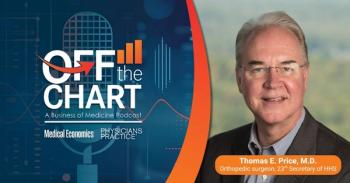
CPOE: A Small Acronym, but a Big Issue for Physicians and Others
Being a provider “champion” for CPOE at our hospital comes with a mix of excitement and trepidation.
Our facility has taken the transition to a full-blown electronic health record (EHR) seriously, and we are now rapidly approaching the execution phase for Computerized Physician/Provider Order Entry (CPOE). I for one am enthusiastic about the transition, and the benefits that it will bring to communication and patient safety.
Anyone who has tried to decipher my handwritten medical orders should also be excited and relieved.
I was chosen this past week as one of the provider “champions” for the CPOE system being implemented at our hospital in early 2012. I have always been an early adopter of technology, and as I discussed in
It is intuitive that making medical orders as clear as possible is good for patient safety and care. A 1999 Institute of Medicine (IOM) report found that mistakes involving prescribing medication are the largest identifiable source of hospital medical errors. Handwritten reports or notes, manual order entry, non-standard abbreviations, and poor legibility led to errors and injuries to patients.
A 2006 report by the IOM stated that each day a hospitalized patient is exposed to a medication error. Studies of CPOEs suggests the medication error rate can be reduced by 80 percent, and errors that have potential for serious harm or death for patients can be reduced by more than half.
Think about when you are doing a manual, multiple-page medication reconciliation after procedures. CPOE will add another fail safe level to this process by rapidly and accurately evaluating the inevitable conflicting poly-pharmaceutics of modern hospital care.
However, it is not all rosy with CPOEs. The majority of providers in our system have trained on - and used - paper-based systems their entire career. The biggest barrier to change seems to be the fundamental and profound shift in how we do business delivering hospital care. The transition to completely-paperless systems for healthcare transactions is a paradigm shift that I fear will be too much for some to navigate.
Unique patients and care settings, and overrides caused by automatic systems, are just a few of the challenges, and potential causes of medical errors, that CPOEs introduce into the medical environment.
For example, the use of default order sets may not take into account every aspect of a unique patient’s weight or comorbidities, resulting in toxic or ineffective doses.
Another thing that I fear will be lost is the “human moment.” It has been my perception that technology sometimes causes a social regression, where we interact more with our devices than each other. This worries me that some of the “team” will be lost among workgroups responsible for caring for hospitalized patients, causing poor interpersonal communication, and creating yet another source of potential medical errors from lack of coordination.
The only way to do this is with human resources, trained and deployed to ease the transition to the 21st century. Implementation of CPOE requires extensive commitment to training, testing, and re-training all users to prevent errors that arise with learning new technology. To that end, my institution plans to hire 60 additional people to assist in the implementation phase of CPOE - demonstrating a commitment to its success.
I have always believed that if you are not part of the solution, you are part of the problem. That is why I’m honored (and more than a little bit apprehensive….) to be chosen as one of the “super users” and champions for our institution’s roll-out of CPOE. It will be a difficult, but necessary transition to the next level, and time will tell if the planning and preparation of our medical staff will be enough to ease the challenges and difficulties of everyone involved.
I will be sure to update you on our progress in the future, and would enjoy reading your comments about transitioning to EHR, implementing a CPOE, or similar programs.
Find out more about Stephen Hanson and our other
This blog was provided in partnership with the American Academy of Physician Assistants. For more information, visit
Newsletter
Optimize your practice with the Physicians Practice newsletter, offering management pearls, leadership tips, and business strategies tailored for practice administrators and physicians of any specialty.








